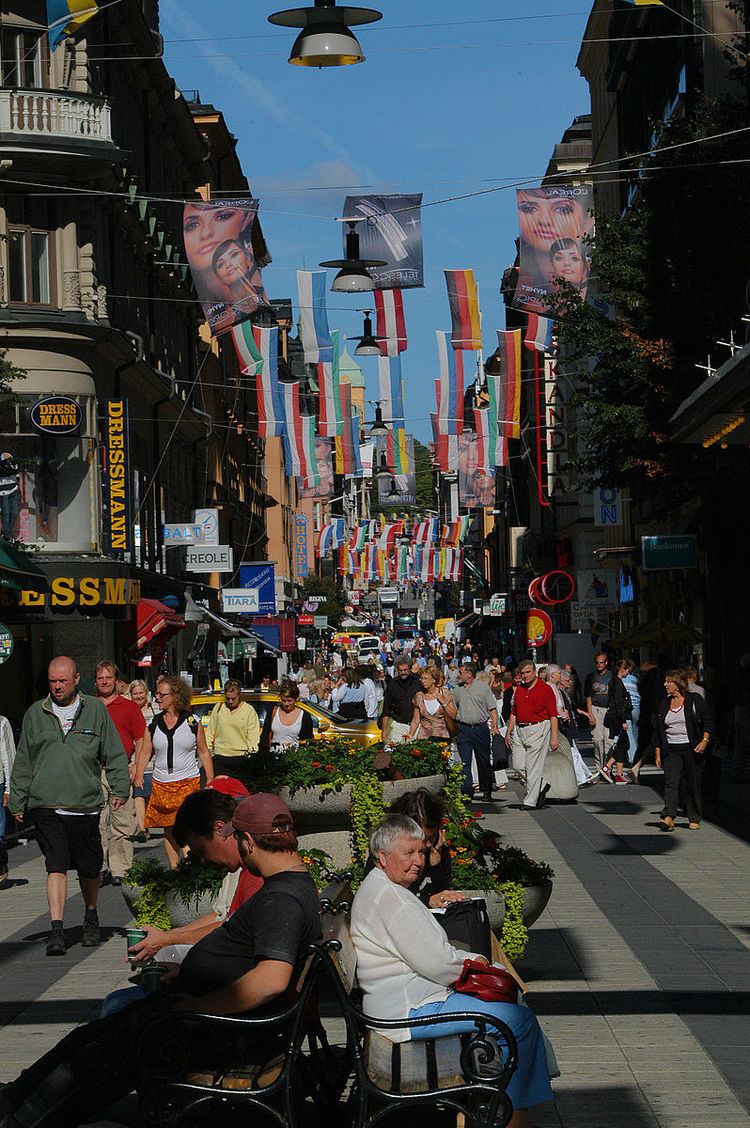 | ||
Hari aruna sharma in drottninggatan stockholm nov 29 11 mov
Drottninggatan (Queen Street) in Stockholm, Sweden is a major pedestrian street. It stretches north from the bridge Riksbron at Norrström, in the district of Norrmalm, to Observatorielunden in the district of Vasastaden.
Contents
- Hari aruna sharma in drottninggatan stockholm nov 29 11 mov
- Map of Drottninggatan Stockholm Sweden
- History
- Famous residents
- References
Map of Drottninggatan, Stockholm, Sweden
Forming a parallel street to Vasagatan and Sveavägen, Drottninggatan is intersected by (south to north) Fredsgatan, Jakobsgatan, Herkulesgatan, Vattugatan, Klarabergsgatan, Mäster Samuelsgatan, Bryggargatan, Gamla Brogatan, Kungsgatan, Apelbergsgatan, Olof Palmes Gata, Barnhusgatan, Adolf Fredriks Kyrkogata, Wallingatan, Kammakargatan, Tegnérgatan, Rådmansgatan, Kungstensgatan and Observatoriegatan.
The major part of the street is car-free and lined-up with numerous stores and shops, one of the largest being the Åhléns City department store. During summer, the street is often crowded with tourists.
History
The street was laid out in the 1630s and 1640s when the surrounding area was built on a rectilinear grid plan, a significant innovation in Stockholm's urban environment. It was originally named Stora Konungsgatan ("Great King's Street") and was later renamed as Drottninggatan in honour of Queen Christina, who ruled from 1632 to 1654.
On 11 December 2010, Drottninggatan was the site of the 2010 Stockholm bombings. Taimour Abdulwahab al-Abdaly, an Iraqi-born Swedish citizen, was killed by one of his own bombs and two other people were injured. The incident was Sweden's first suicide bombing.
Famous residents
The playwright, novelist and essayist August Strindberg lived at Blå tornet (Drottninggatan 85) for the last four years of his life. The building is now the site of the Strindberg Museum.
Another famous resident was the 19th century banker and newspaper tycoon André Oscar Wallenberg, who lived with his family at Drottninggatan 66 until 1876.
